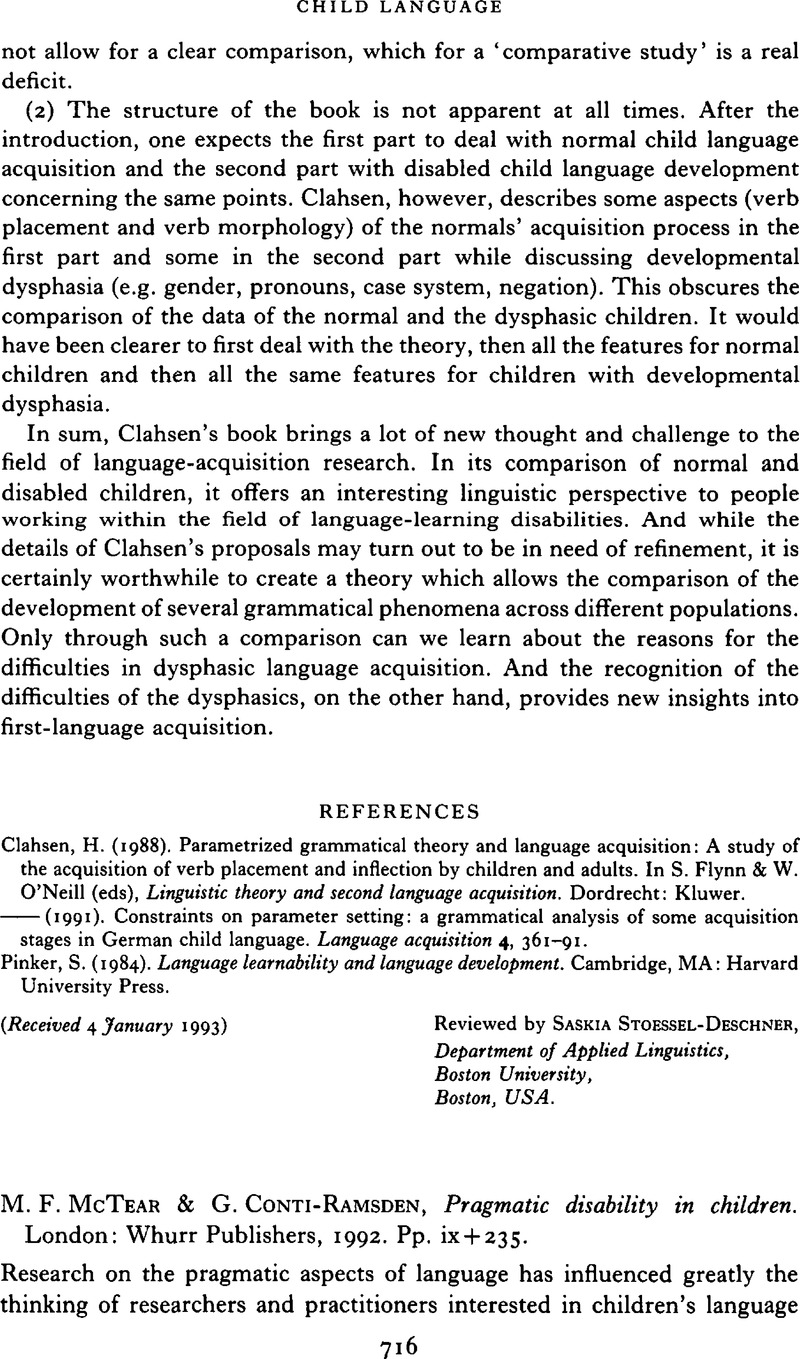No CrossRef data available.
Article contents
M. F. McTear & G. Conti-Ramsden, Pragmatic disability in children. London: Whurr Publishers, 1992. Pp. ix + 235.
Published online by Cambridge University Press: 26 September 2008
Abstract
An abstract is not available for this content so a preview has been provided. Please use the Get access link above for information on how to access this content.

- Type
- Reviews
- Information
- Copyright
- Copyright © Cambridge University Press 1993
References
REFERENCES
Abbeduto, L. (1991). The development of linguistic communication in persons with mild to moderate mental retardation. In Bray, N. (ed.), International review of research in mental retardation. New York: Academic Press.Google Scholar
Clark, H. H., Schreuder, R. & Buttrick, S. (1983). Common ground and the understanding of demonstrative reference. Journal of Verbal Learning and Verbal behavior 22, 245–58.CrossRefGoogle Scholar
Clark, H. H. & Wilkes-Gibbs, D. (1990). Referring as a collaborative process. In Cohen, P. R., Morgan, J. & Pollack, M. E. (eds), Intentions in communication. Cambridge: MIT Press.Google Scholar
Gallagher, T. M. (1991). Pragmatics of language: clinical practice issues. San Diego: Singular Press.Google Scholar
Gibbs, R. W. (1984). Literal meaning and psychological theory. Cognitive Science 8, 275–304.CrossRefGoogle Scholar
Rapin, I. & Allen, D. A. (1987). Developmental dysphasia and autism in preschool children: characteristics and subtypes. Proceedings of the first international symposium on specific speech and language disorders in children. Association for all Speech Impaired Children.Google Scholar




